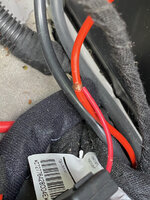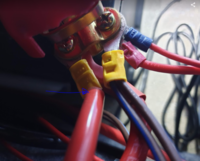Hi chaps.
With regard to the panel, the converter agreed there is an issue, and has booked it in for the start of next month to replace both the panel and MPPT controller. Hopefully that will resolve the issue.
I now have ANOTHER electrical issue I am afraid. Maybe related? I dont know!
I have continued to use the van (until lockdown) but have obviously had to use pitches with electric hook up. The last time we went away we had another bizarre electric issue.
So, we spent two nights on full electric hook up with no issues (leisure batter 100% as one would expect). We checked out, and drove toward home. We stopped at one location for 20 mins on way home and I know the eclectics were ok at that stop, as I got something from the fridge. Our total drive home was about 2 hours (and done in the light), so the split charger should be doing its thing and keeping it topped up.
When I arrived home, first job was to empty the fridge. But I found the fridge was off, and all the lights were flashing is a crazy manner (see videos linked below). There was no way to turn off the fridge, it was just stuck like it. Then when I checked the battery charge from the LED indicator panel inside the van, it showed 1 red light, and beeped (showing it was flat - again, see videos linked below).
I turned the electric back off inside the van, and tried multiple times, always same result... would show 1 red LED and beep.
Here are the videos I took of it when it went weird.

drive.google.com

drive.google.com
I then left it a while (whilst unpacking other things) and also flicked this switch on and off (which I am not sure is even related to running off leisure battery):

And as if by magic, next time I tried it, it was all ok again. Switch was off, and switch back on again, and all of a sudden, I was getting all LED indicators showing full battery charge. Nothing had happened, i had not charged it or anything, simply waited for 25 mins, and flipped that switch on and off! The victron bluetooth app also showed battery as full charge, so no idea what had happened!
Has anyone seen anything like this before, or have an idea what it could be? I told the converter about it (sent him videos) and he said he would like whilst changing the panel and the MPPT - but I dont think he knows what this fault is. Obviously, it is intermittent, and has not done it in last week or so.
Any ideas or info much appreciated
Thanks,
Roy







